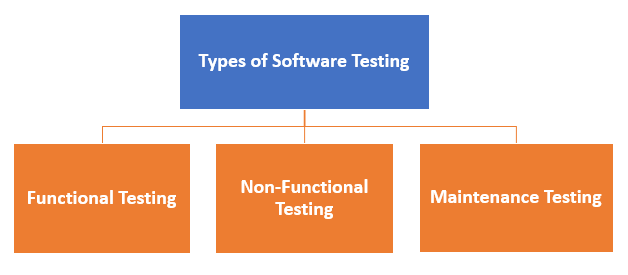What is Software Testing?
- The Tech Platform

- Feb 22, 2021
- 4 min read
Updated: Mar 22, 2023
Software testing is the process of evaluating a software application or system to identify any defects, errors, or gaps between expected and actual results. The purpose of software testing is to ensure that the software meets the specified requirements, performs as expected, and is free from defects before it is released to end-users or customers. Software testing involves various activities, such as test planning, test case design, test execution, and defect management, to ensure that the software is of high quality, reliable, and satisfies the user's needs. The goal of software testing is to improve the quality and reliability of the software while minimizing the risk of errors or defects that could impact the end-users.

Why Software Testing is Important?
software testing is important because it helps to ensure that software is of high quality, reliable, user-friendly, and meets the needs of its intended users. Testing helps organizations minimize risk, reduce costs, and improve the overall performance of their software. Software testing is important for several reasons:
Ensures quality: The main purpose of software testing is to ensure that the software meets the required quality standards and performs as expected. Testing helps to identify defects, errors, or gaps in the software, which could impact its performance or reliability. By testing the software, organizations can ensure that their software is of high quality and meets user expectations.
Reduces costs: Fixing defects in the later stages of the software development cycle is more expensive than fixing them in the early stages. Testing helps to identify defects early in the development cycle, which reduces the cost of fixing them later. By finding defects early, organizations can avoid costly rework and ensure that the software is delivered on time and within budget.
Enhances user experience: Software testing helps to ensure that the software meets user requirements and expectations. By testing the software, organizations can identify any usability issues, performance bottlenecks, or other issues that could impact the user experience. This helps to ensure that the software is user-friendly and meets the needs of its intended users.
Increases reliability: Testing helps to ensure that the software is reliable and performs as expected. By identifying defects and errors in the software, organizations can improve its reliability and minimize the risk of system failures or downtime.
Ensures compliance: In some industries, such as healthcare or finance, software must meet specific compliance regulations. Testing helps to ensure that the software meets these regulations and is compliant with industry standards.
Types of Software Testing
Typically Testing is classified into three categories.
Functional Testing
Non-Functional Testing or Performance Testing
Maintenance (Regression and Maintenance)
Functional Testing:
Functional testing is concerned with testing the functional requirements of the software application. It verifies that the software performs the functions it is designed to do and meets the user's requirements.
Functional testing includes
Unit testing,
Integration testing,
System testing, and
User acceptance testing.
Non-functional Testing:
Non-functional testing is concerned with testing the non-functional aspects of the software application, such as performance, security, usability, and compatibility. Non-functional testing ensures that the software is reliable, efficient, and user-friendly.
Non-functional testing includes
Performance testing,
Security testing,
Usability testing, and
Compatibility testing.
Maintenance Testing:
Maintenance testing is concerned with testing the software after it has been deployed and used by end-users. It ensures that the software continues to meet its functional and non-functional requirements over time.
Maintenance testing includes
Regression testing,
Maintenance acceptance testing, and
Change-related testing.
Testing Strategies in Software Engineering
There are several testing strategies used in software engineering, which include:
Unit Testing: This is the testing of individual software components or modules. Unit tests are usually automated, and they help to identify errors or defects early in the development process.
Integration Testing: This testing strategy involves testing the integration between different software components or modules. The purpose of integration testing is to verify that the different components or modules can work together correctly and produce the expected results.
System Testing: This testing strategy involves testing the entire system as a whole. System testing verifies that all the software components and modules work together correctly and produce the expected results under different conditions.
Acceptance Testing: This testing strategy involves testing the software application to ensure that it meets the user's requirements and expectations. Acceptance testing is usually conducted by end-users, and it helps to identify any issues or problems with the software before it is deployed.
Regression Testing: This testing strategy involves retesting the software application after any changes or modifications have been made. Regression testing ensures that the changes or modifications did not introduce any new errors or defects in the software.
Performance Testing: This testing strategy involves testing the software application's performance under different conditions, such as high traffic or heavy load. Performance testing ensures that the software can handle large amounts of data, users, and transactions without slowing down or crashing.
Security Testing: This testing strategy involves testing the software application's security and identifying any vulnerabilities or weaknesses that could be exploited by hackers or malicious users.
What are the benefits of Software Testing?
Here are the benefits of using software testing:
Cost-Effective: It is one of the important advantages of software testing. Testing any IT project on time helps you to save your money for the long term. In case the bugs are caught in the earlier stage of software testing, it costs less to fix.
Security: It is the most vulnerable and sensitive benefit of software testing. People are looking for trusted products. It helps in removing risks and problems earlier.
Product quality: It is an essential requirement of any software product. Testing ensures a quality product is delivered to customers.
Customer Satisfaction: The main aim of any product is to give satisfaction to its customers. UI/UX Testing ensures the best user experience.
Conclusion
The testing strategies are used to ensure that software applications are of high quality, meet user requirements, and are reliable, efficient, and secure. By using a combination of testing strategies, organizations can minimize the risk of errors, defects, or failures and ensure that their software is of high quality and meets the needs of its users.






Comments